Williams Island: Chattanooga’s Sanctuary in the TN River
By: Robert Windham
Positioned at the gateway to the Tennessee River Gorge and rising straight out of the river sits the 2-mile-long by 1-mile-wide Williams Island. With Lookout Mountain in view to its south, Elder Mountain to its west, and Signal Mountain to its north, this 450-acre island provides visitors with a stunning example of nature’s artistry. The island itself includes a mosaic of habitat types such as riparian forests, wetlands, and managed open farmland.
Although just a few miles from the urban center of Chattanooga, Williams Island is home to a variety of wildlife. Ospreys can be seen on nesting platforms, bald eagles soar overhead, belted kingfishers dart along the banks, and indigo buntings fill the summer air with song. During early spring, visitors who sign up for the Tennessee River Gorge Trust’s public “Woodcock Walk” can witness the impressive aerial mating displays of the American woodcock. In the forests and fields, white-tailed deer, wild turkeys, armadillos, and foxes roam, while the wetlands host turtles, frogs, salamanders, and an array of waterfowl. As some migratory birds use rivers and mountain ranges as navigational aids throughout their journey, Williams Island may play a role as a potential stopover site for traveling migrants.
Above is a snapshot of the wildlife you might encounter when visiting Williams Island. In order from left to right: osprey, american woodcock, female indigo bunting, male indigo bunting, male wild turkey. All birds handled with proper permits issued by the U.S. Geological Survey’s Bird Banding Laboratory.
Aside from serving as a refuge for flora and fauna, Williams Island has also been a home for people across millennia, from Indigenous communities who first shaped its landscape to European settlers who farmed its fertile soils. According to archaeological evidence, the island has been inhabited for over 10,000 years! Long before European contact, the island was home to Indigenous tribes of the Mississippian era, ancestors of those of the Cherokee and Muscogee Creek tribes who would later inhabit the island as well. Pottery shards, stone tools, and even Spanish trade goods have surfaced from the soil, telling stories of ancient trade and daily life.
As an alluvial island that received deposits of clay, sand, and silt during the regular floods occurring before the construction of the Chickamauga dam in 1940, Williams Island was an attractive farming site for both Indigenous communities and European settlers. Following the tragedy of the Cherokee removal, the island continued to be farmed by generations of various families. Today, farmers have a cattle operation on the west side of the island and regularly hay the open fields.
The open farmlands during Indigenous and European occupancy likely resembled this historic photo of Williams Island above. Photo Credit: Will Stokes.
Present day conditions of Williams Island.
While Williams Island is owned by the State of Tennessee, the Tennessee River Gorge Trust manages the land on behalf of the state while also providing public access, outdoor education opportunities, and conducts research. The island is only accessible by water crafts from the Coolidge Park boat ramp (8 miles upstream) or the Suck Creek boat ramp (2 miles downstream). A boat dock on the eastern facing side of the island just across from Baylor School is the primary access site to get onto the island. There are 8 free campsites on the island (available to reserve here), 2 composting privies, with many of the campsites containing a fire ring and picnic table. A roughly half mile trail connects one group of campsites to the other, however, TRGT has plans to implement a longer trail with interpretive kiosks that will guide visitors to scenic vistas across the island’s beautiful countryside. With guidance from members of the Eastern Band of Cherokee and Muscogee Creek Nation, TRGT’s goal remains clear: to balance the magic of this culturally and ecologically significant landscape with careful stewardship, ensuring that Williams Island’s wild heart continues to beat for generations to come. If you’d like to learn more about the cultural history of Williams Island, check out this article highlighting the work of our State of Tennessee Archeologists.
Check out this short video featuring our public access sites on Williams Island.

















